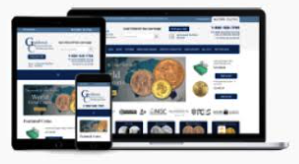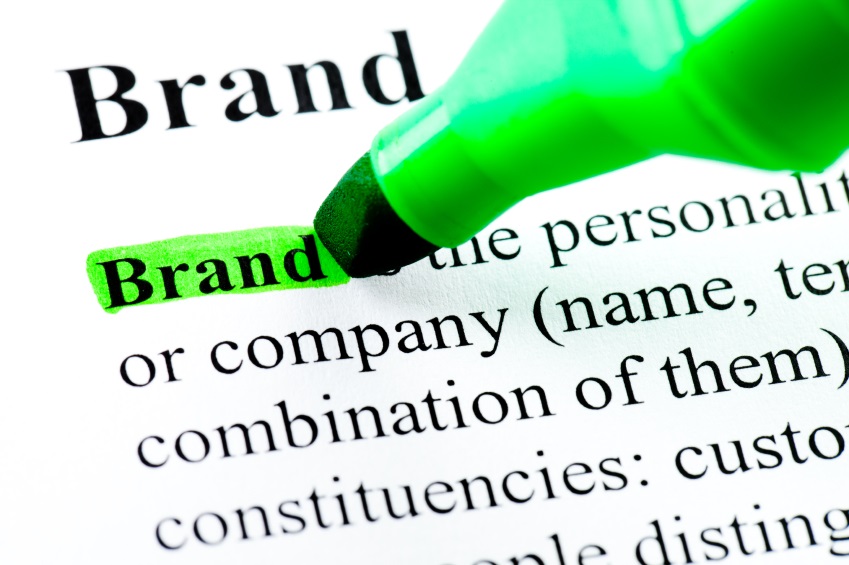Most products aren’t brands. People who kid themselves about having a brand are doing their company and products a disservice. They are also embarrassing themselves. Like a couch potato wearing spandex, it’s uncomfortable to witness.
Blame it on college textbooks
Ten years ago, I did a favor for the head of the marketing department at a local college and taught a Principles of Marketing class for a semester. I enjoyed it and ended up teaching it for four years.
The textbook I used – Marketing by Lamb, Hair and McDaniel – was remarkably well written and easy to understand. But there was one glaring flaw: they got the definition of the term “brand” wrong. How could that be? No big deal I thought. I’ll just grab some definitions from a few other textbooks and we’ll have an interesting class discussion.
When I went in search of other definitions of brand, I was stunned. I found that an almost exact definition had been repeated for over 30 years. I had to shake my head. How could the wrong definition of the most important marketing term be repeated over and over without ever being corrected? Amazing.
Take a look the similarity of these definitions so you know what I’m talking about. Then I’ll explain why they are wrong and give you a better definition.
1977 Marketing by Pride, Ferrel
A brand is a name, term, symbol, design, or a combination of these that identifies a seller’s products and differentiates them from competitor’s products.
1999 Principles of Marketing by Philip Kotler, Gary Armstrong
A name, term, symbol, or design, or combination of these that identifies the products or services of one seller group or group of sellers and differentiates them from those of competitors.
2010 Marketing by Lamb, Hair and McDaniel
A name, term, symbol, design or combination thereof that identifies a seller’s products and differentiates them from competitors products.
2014 American Marketing Association
A brand is a “name, term, design, symbol, or any other feature that identifies one seller’s good or service as distinct from those of other sellers.”
2014 Wikipedia
Brand is the “name, term, design, symbol, or any other feature that identifies one seller’s product distinct from those of other sellers.”
It’s easy to explain why this definition is wrong. Take the first half: A name, term, symbol, design or combination thereof that identifies a seller’s products. That’s not a brand. That’s a logo. A logo has two parts. The spoken part of the logo is the name or term; the unspoken part is a symbol or design.
And what about the second part: differentiates them from the competition? That’s not a brand either. That’s positioning, as in differentiating your product from your competition in the mind of the consumer.
I started thinking about how someone might have arrived at such a cockeyed textbook definition. I have a feeling these were academics, with no real-world experience selling product, who took the analogy of branding cattle too literally. Take a hot piece of iron in the shape of A name, term, symbol, design or combination thereof that identifies a cattle’s owner and then burn the cattle to create a scar that differentiates them from other cattle.
If you use that literal analogy, anyone who slaps a unique name and logo on a product has a brand. How nice. Everyone gets a trophy. What a terrible corruption of such an important term.
Rather than spend more time writing about how unfortunate that common definition is, let me give you a better and far more useful one:
A brand is the definition consumers hold in their minds of your company and its products. It is created in two ways: by what you tell people and by what they experience.
If you’ve been calling your product a brand consider this: If you asked a thousand random people in your target market for a definition of your product, what percentage would be able to give you an accurate description? Two percent? Ten percent? Fifty percent? How about brands such as McDonald’s, Budweiser, Papa Murphy’s, Tylenol and Breathe Right Nasal Strips? What percentage of people in their target markets can give an accurate description?
I suppose you could make the argument that even if one out of a thousand can define your product, at least on some level you are a brand. But then you’d be back to everyone gets a trophy.
So when does a company or product become a brand? It’s when most of your market knows who you are. If more than half of your target market draws a blank when they are asked about you, you’d be better off referring to yourself as company that has a lot more marketing to do.
Becoming a brand takes a tremendous amount of education. The more complicated and difficult the product, the more difficult the work.
A good place to start: create your brand bull’s eye
Imagine that you are sitting in a coffee shop. You can hear the people at the next table. One of them is telling the others about your product. If the person telling the story gets it exactly right, you have branded that person correctly. I would encourage you to write down what you would like that coffee shop conversation to sound like. It’s called a brand statement. Now you have a brand bull’s eye to aim for. It will probably start out something like this: I just love … Think about that. You have to get your market to love your product. Know why? Because they love their money. And they won’t buy your product if they don’t love your product more than their money. That’s a high hurdle.
Planting a definition is the consumer’s mind that is persuasive enough to cause them to purchase is challenging. You’ll need their full attention and you need to connect on a emotional level.
We offer the most inexpensive and effective way to reach and teach customers about your company and its products: PUBLICITY. Everybody knows stories in the media are good for business. Hundreds of them can be trajectory changing. There’s just no better shortcut to creating a brand than reporters and producers doing stories that teach people about your product.
Twenty five years ago the media did a story about us featuring Dr. Dan Cohen, the president of a little-known company named CNS. CNS was launching a new product called Breathe Right Nasal Strips, and in the news segment Dan was explaining why he had hired our company to arrange media coverage for them. He said, “We don’t have the kind of resources that a pharmaceutical firm would have to spend millions of dollars on media advertisement. We simply cannot do that.”
But he did have $20,000. And that was enough to gin up some some media coverage.
We sell publicity priced by the story and our customers love it. As a matter of fact, here’s a quote from one of our clients, Rhoda Olsen, CEO of Great Clips. “I love seeing Great Clips stories pop up on the news all over the country. It’s just great to see TV hosts talking to our franchise owners about the great things they’ve done in their communities.” Notice that word love?
We have clients who have been sending us handsome checks every month for a decade or more. Why? Because they love the media’s ability to share their story and ultimately shape their brand. They love media coverage and they love how much media coverage we deliver. They also love that we charge per story we arrange rather than billing hourly with no guarantee of coverage.
If you could just push a button and have the media doing stories about your company and its products, would you? It’s almost that easy. Call us. We’ve been in business more than 25 years, and we just keep getting better. Every day our publicists are on the phone with reporters and producers across the country. They have thousands of contacts who trust them. Tap into our network and use it to spread the word about your product.
Do what Dan Cohen, Rhoda Olsen and several hundred other CEOs and marketing directors have done. Hire us to get reporters and producers to do stories about you. Harnessing media coverage will likely be the most cost-effective marketing you will ever do.
Heather Champine started as a publicist almost 20 years ago. Last year, I made her a partner in the business. Her knowledge of what it takes to get the media to do stories about a company and their products is unmatched. She proved herself early on by consistently getting media coverage for our least-interesting clients. You can reach her at 952-697-5269. Give her a call and see if she thinks the media would be willing to doing stories about your product. I often hear from new clients that they were amazed at her knowledge of the media. A call to her will be well worth your time.







